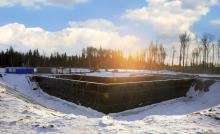3D Time-Lapse Surveys: Watching Resistivity Change Over Time
The three-dimensional (3D) time-lapse resistivity survey is the holy grail of resistivity surveys. It is an extremely accurate and effective method that allows you to not only see the surveyed area in three dimensions—but also how the resistivity in the surveyed area changes over time.









